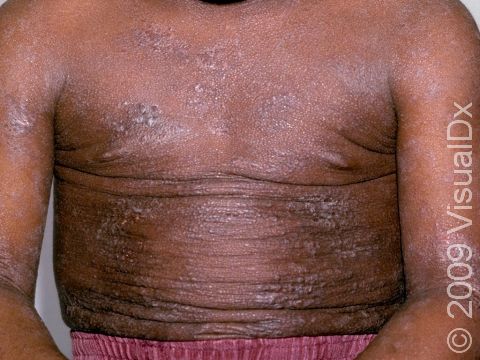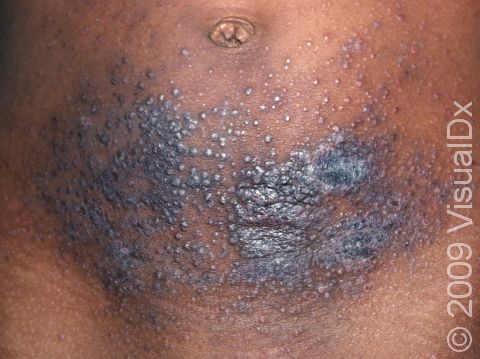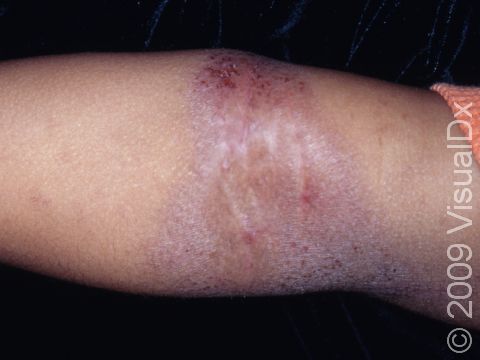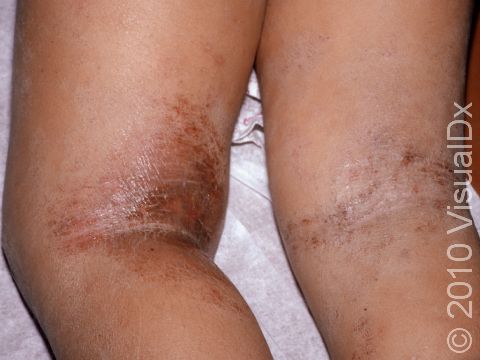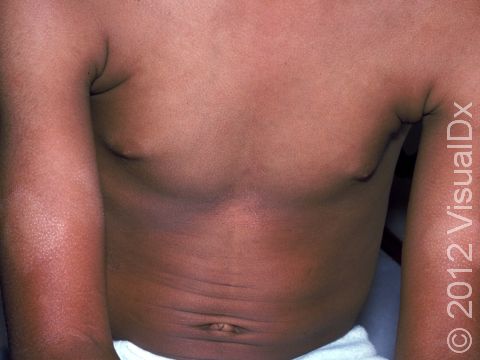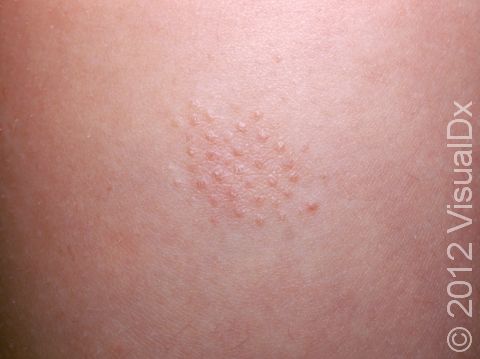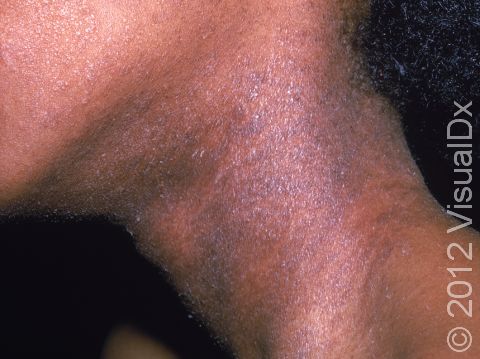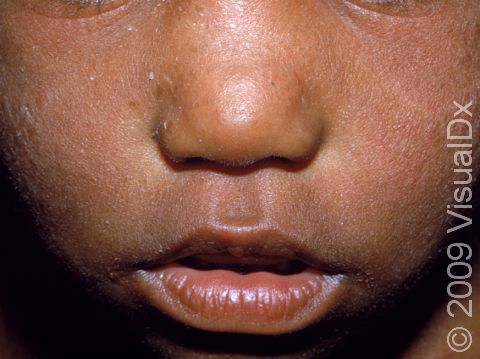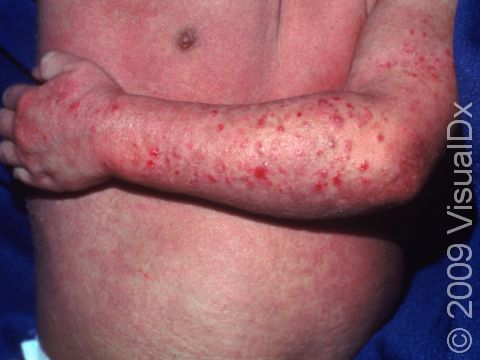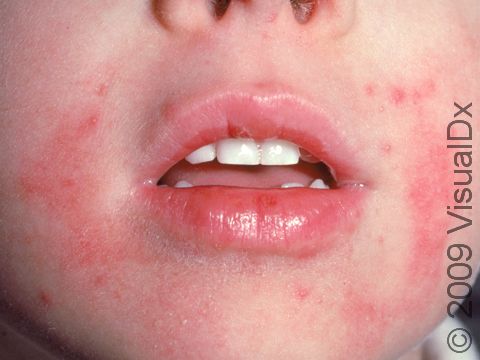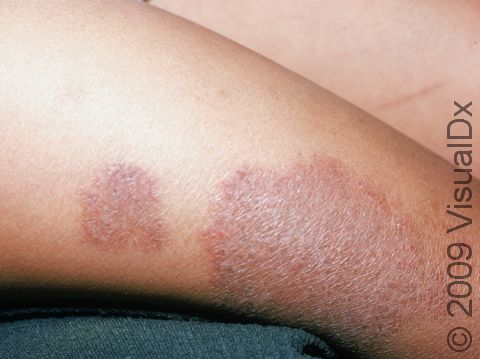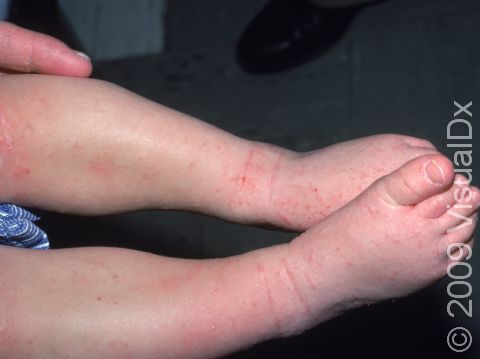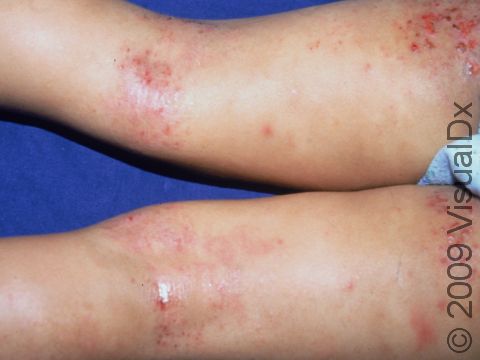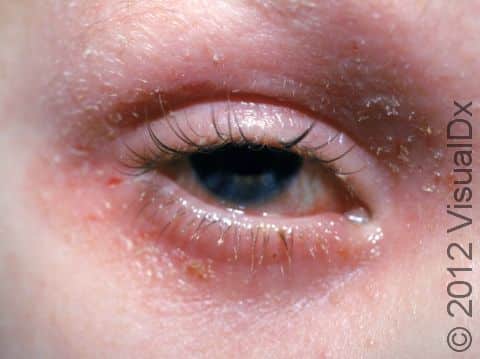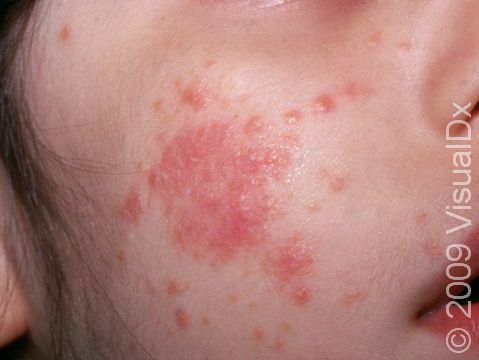Eczema (Atopic Dermatitis)
- Eczema (atopic dermatitis) is a disorder associated with dry skin that begins with intense itching that is aggravated by scratching. The condition runs in families and often occurs along with asthma and hay fever.
- Eczema is a condition primarily affecting people who have allergies.
- Heat, humidity, detergents / soaps, abrasive clothing (eg, very scratchy wools), chemicals, smoke, and stress may trigger eczema.
- Scratching increases the chances of developing an infection in the affected areas (superimposed infection) because scratching creates breaks in the skin that can allow bacteria to get in.
- There is no cure for eczema, and it is not contagious.
Who's At Risk?
Infants and children are most frequently affected by eczema, but this condition may continue into adulthood.
Signs & Symptoms
Eczema is usually itchy.
The most common locations for eczema are the face, neck, front of the elbows, behind the knees, and the arms and legs.
Thickened, scaly papules (small, raised bumps) and plaques (areas of raised skin that are larger than a thumbnail and feel rough and flaky) are seen in the skin of these areas. The condition may be:
- Mild – few, scattered areas that are easily treated with self-care measures.
- Moderate – more extensive areas that are more difficult to control with self-care measures and may require prescription therapy.
- Severe – widespread (diffuse) affected areas that are difficult to treat even with prescription therapy.
In lighter skin colors, affected areas may appear pink or red; in darker skin colors, the redness may be subtle, or affected areas may appear purplish or darker brown.
Children with eczema may have prominent affected areas on the arms and legs, particularly in front of the elbows and behind the knees.
There may also be extensive accentuation of the hair follicles and shiny skin without obvious thickened, raised areas.
Infected areas can develop thick crusts.
Self-Care Guidelines
Maintaining adequate moisture in the skin is very important.
Self-care measures include the following:
- Moisturizing skin-care routines are essential.
- Hypoallergenic moisturizing soaps, such as unscented Dove Sensitive Skin Beauty Bar, Vanicream Cleansing Bar, and Nature by Canus, are recommended.
- Thick moisturizers such as petroleum jelly (Vaseline), Aquaphor Healing Ointment, Eucerin Original Healing Cream, CeraVe Healing Ointment, or CeraVe Moisturizing Cream should be applied to damp skin daily after bathing.
- Treat areas of skin color change and itching with over-the-counter hydrocortisone (eg, Cortaid) cream or ointment 0.5%-1% twice daily. Avoid using steroid cream on the eyelid area for more than a few days.
- Attempt to minimize exposure to heat, humidity, detergents / soaps, abrasive clothing, chemicals, smoke, and stress.
- Fragrance-free laundry detergent may be beneficial.
- Keep the home from getting too dry by using a humidifier, especially in the bedroom.
Treatments
Topical or oral (systemic) medications can include:
- Topical steroid creams or ointments to treat areas of limited (localized) eczema. Use lower-strength steroids on the face and medium-to-high-strength steroids on the body (trunk) and arms or legs (extremities). Be careful when using topical steroids in skin folds and on covered (occluded) skin areas to avoid the risk of thinning (atrophy) of the skin.
- Medications that allow you to reduce steroid exposure (called steroid-sparing agents), such as topical ruxolitinib (Jakafi) cream, tacrolimus (Prograf) ointment, or pimecrolimus (Elidel) cream, may be used for treating sensitive areas such as the face. Ruxolitinib cream is approved for use in children 12 years and older. Tacrolimus and pimecrolimus are not approved for use with children younger than 2 years. They have a warning that their use may have a small risk of causing cancer.
- Oral antihistamines may be prescribed to reduce itching.
- A short course of oral steroids may be prescribed for worsening (flared) eczema.
- Light therapy may be recommended for treatment of widespread, resistant eczema, as may newer medications such as dupilumab (Dupixent) or Janus kinase (JAK) inhibitors for severe cases.
- In patients who have multiple areas of broken skin or a history of bacterial skin infections, dilute bleach baths may be recommended.
- If an infection is suspected, topical or oral antibiotics may be prescribed.
Visit Urgency
See your child’s medical professional for evaluation if you see no improvement with self-care measures or the eczema gets worse. Also seek medical care if you see areas of pus or large numbers of crusty areas (scabs), as this might be caused by infection with bacteria.
Trusted Links
References
Bolognia J, Schaffer JV, Cerroni L. Dermatology. 4th ed. Philadelphia, PA: Elsevier; 2018.
James WD, Elston D, Treat JR, Rosenbach MA. Andrew’s Diseases of the Skin. 13th ed. Philadelphia, PA: Elsevier; 2019.
Kang S, Amagai M, Bruckner AL, et al. Fitzpatrick’s Dermatology. 9th ed. New York, NY: McGraw-Hill Education; 2019.
Paller A, Mancini A. Paller and Mancini: Hurwitz Clinical Pediatric Dermatology. 6th ed. St. Louis, MO: Elsevier; 2022.
Last modified on February 28th, 2023 at 8:23 pm

Not sure what to look for?
Try our new Rash and Skin Condition Finder
